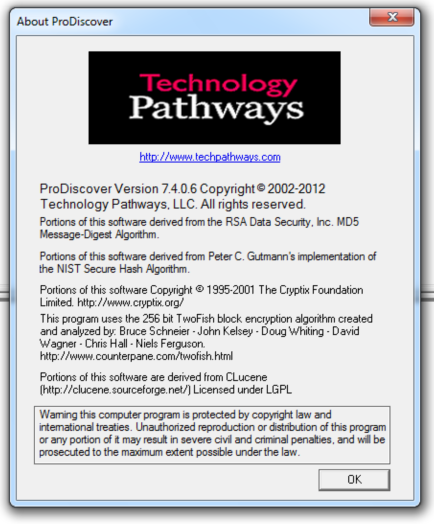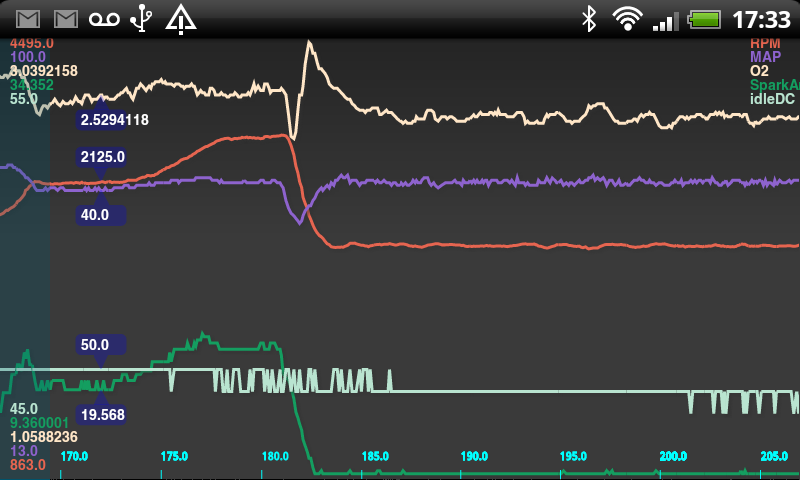Prodiscover Basic For Mac
The ARC Group ProDiscover® Basic edition is a self-managed tool for the examination of your hard disk security. ProDiscover Basic is designed to operate under the National Institute of Standards’ Disk Imaging Tool Specification 3.1.6 to collect snapshots of activities that are critical to taking proactive steps in protecting your data. ProDiscover Basic has a built-in reporting tool to present findings as evidence for legal proceedings. You gather time zone data, drive information, Internet activity, and more, piece by piece, or in a full report as needed. You have robust search capabilities for capturing unique data, filenames and filetypes, data patterns, date ranges, etc. ProDiscover Basic gives clients the autonomy they desire in managing their own data security. At the ARC Group, we provide the tools you need to identify security issues before they escalate, and we use ProDiscover solutions to maintain your corporate safety and preserve your data.
With ProDiscover Basic, professional consultants, system administrators, and investigators take the upper hand to manage cyber security at every level and protect information in the case of impending legal actions. First Download the ProDiscover Basic from here and install it in pc and enter the Project Number, Project File Name and Description in prodiscover basic software. Click on Open. In main window click on Capture & Add Image Now select the source drive that we want to capture, this could be a USB Drive or physical Drive.In my case I select drive Physical Drive 1 which is my USB drive. Now set the destination of the image file where we want to store it, in my case I used E: drive and named the image folder as pd and the name of the image which is to be saved in desired folder is PD.EVE.
Now enter the ‘ Technician Name’, ‘ Image Number’ and ‘ description’ Now Click on ok. After finishing the following steps, windows will appear. After imaging the drive close the prodiscover program then it will ask you to save your project.
Now starts prodiscover program again and click on open project and browser your project image select it and click open Now the project will open & go to the left menu and click on Content View. Then it will show you all the contents of evidence image. To generate the automatic report click on report tab under the view menu.
Then it will show you Evidence Report. Author: Mukul Mohan is a Microsoft Certified System Engineer in Security and Messaging.He is a Microsoft Certified Technology Specialist with high level of expertise in handling server side operations based on windows platform. An experienced IT Technical Trainer with over 20 years’ Experience. You can contact him at.

Forensic Explorer - Facts Sheet Forensic Explorer is a tool for the preservation, analysis and presentation of electronic evidence. Primary users of this software are law enforcement, government, military and corporate investigations agencies.
Forensic Explorer combines a flexible graphic user interface (GUI) with advanced sorting, filtering, keyword searching, previewing and scripting technology. It enables investigators to:.

Manage the analysis of large volumes of information from multiple sources in a case file structure;. Access and examine all available data, including hidden and system files, deleted files, file and disk slack and unallocated clusters;.
Automate complex investigation tasks;. Produce detailed reports; and,. Provide non forensic investigators a platform to easily review evidence. Recommended Requirements:. Forensic Explorer and Mount Image Pro are optimized for an Intel® Core i7 with 16GB RAM. Forensic Explorer is 64bit application (32bit is available on request). Supported Host Operating Systems are Windows 7, 8, 8.1 or 10.
Prodiscover Basic For Mac
Forensic Explorer should be run with local administrator permissions where possible. Supported File Formats Forensics Explorer supports the analysis of the following file formats:. Apple DMG.
DD or RAW;. EnCase® (.E01,.L01, Ex01);. Forensic File Format.AFF. FTK® (.E01,.AD1 formats);. ISO (CD and DVD image files);. Microsoft VHD.
NUIX File Safe MFS01. ProDiscover®.
SMART®. VMWare®. XWays E01 and CTR Supported File Systems Forensic Explorer supports analysis of:. Windows FAT12/16/32, exFAT, NTFS,. Macintosh HFS, HFS+. EXT 2/3/4. Hardware and Software RAID: JBOD, RAID 0, RAID 5 Email Analysis Formats Email module supports the analysis of.PST files.
The Index Search module (DTSearch) supports the index and keyword search of.PST files. Key Features: Live Boot: Boot forensic image files, including Windows (all versions) and MAC. Learn more about. Shadow Copy analysis: Easily add and analyze shadow copy files. Learn more about Forensic Explorer.
Customizable Interface: The forensic explorer interface has been designed for flexibility. Simply drag, drop and detach windows for a customized workspace. Save and load your own workspace configurations to suit investigative needs. International Language Support: Forensic Explorer is Unicode compliant. Investigators can search and view data in native language format such as Dutch or Arabic.
Complete Data Access: Access all areas of physical or imaged media at a file, text, or hex level. View and analyze system files, file and disk slack, swap files, print files, boot records, partitions, file allocation tables, unallocated clusters, etc. Fully Threaded Application: Run multiple functions and scripts in threads.
Multiple Core Processing: Maximize PC processors for intensive functions like keyword searching, data carving, hashing, signature analysis. Powerful Pascal Scripting language: Automate analysis using a provided script library, or write your own analysis scripts. Automate tasks such as:.
Run skin tone analysis on graphics files;. Extract user, hardware system information from the registry;. Locate and analyze transcripts from Internet chats; etc. Data Views: Powerful data views including:.

File List: Sort and multiple sort files by attribute, including, extension, signature, hash, path and created, accessed and modified dates. Disk: Navigate a disk and its structure via a graphical view. Zoom in and out to graphically map disk usage. Gallery: Thumbnail photos and image files. Display: Display more than 300 file types. Zoom, rotate, copy, search.
Play video and music. Filesystem Record: Easily access and interpret FAT and NTFS records. Text and Hexadecimal: Access and analyze data at a text or hexadecimal. Automatically decode values with the data inspector. File Extent: Quickly locate the location of files on disk with start and end sector runs. Byte Plot and Character Distribution: Examine individual files using Byte Plot graphs and ASCII character distribution. Categorize and Custom Filter:.
Filter any list view to show folders and files that match a set criteria. Script your own filters. Display files in Categories view where files are grouped by extension, signature, attribute, etc. Quickly flag files of interest. RAID Support: Work with physical or forensically imaged RAID media, including software and hardware RAID, JBOD, RAID 0 and RAID 5. Hashing: Apply hash sets to a case to identify or exclude known files. Hash individual files for analysis.
Keyword search: Sector level keyword search of entire media using RegEx expressions. Keyword index: Built in multi-threaded DTSearch index and keyword search technology. Bookmarks and Reporting: Add case notes to identify evidence and include case notes in a custom report builder. Data Recovery and Carving: Recover folders, files and partitions. Use an inbuilt data carving tool to carve more than 300 known file types or script your own. Learn more about Forensic Explorer. File Signature Analysis: Forensic Explorer can automatically verify the signature of every file in a case and identify those mismatching file extensions.
Registry analysis: Open and examine Windows registry hives. Filter, categorize and keyword search registry keys. Automate registry analysis with RegEx scripts. Download and try Forensic Explorer for 30 days.
